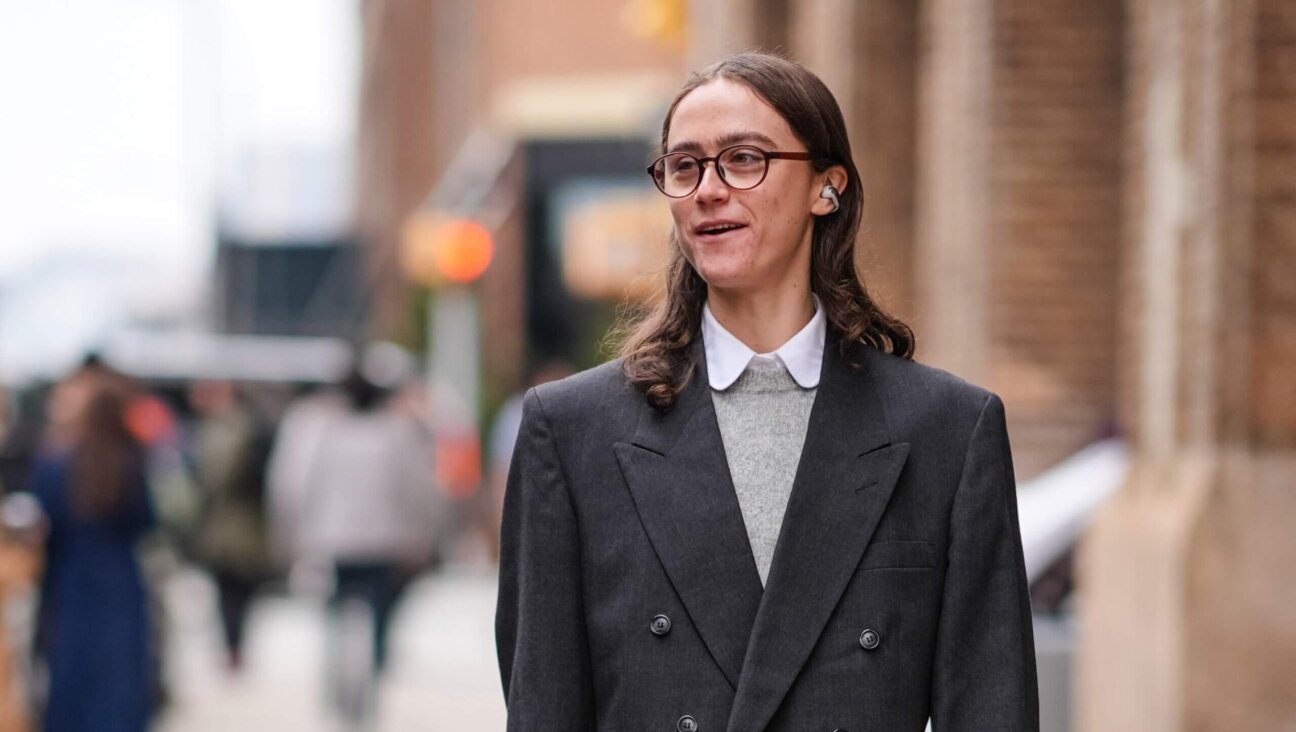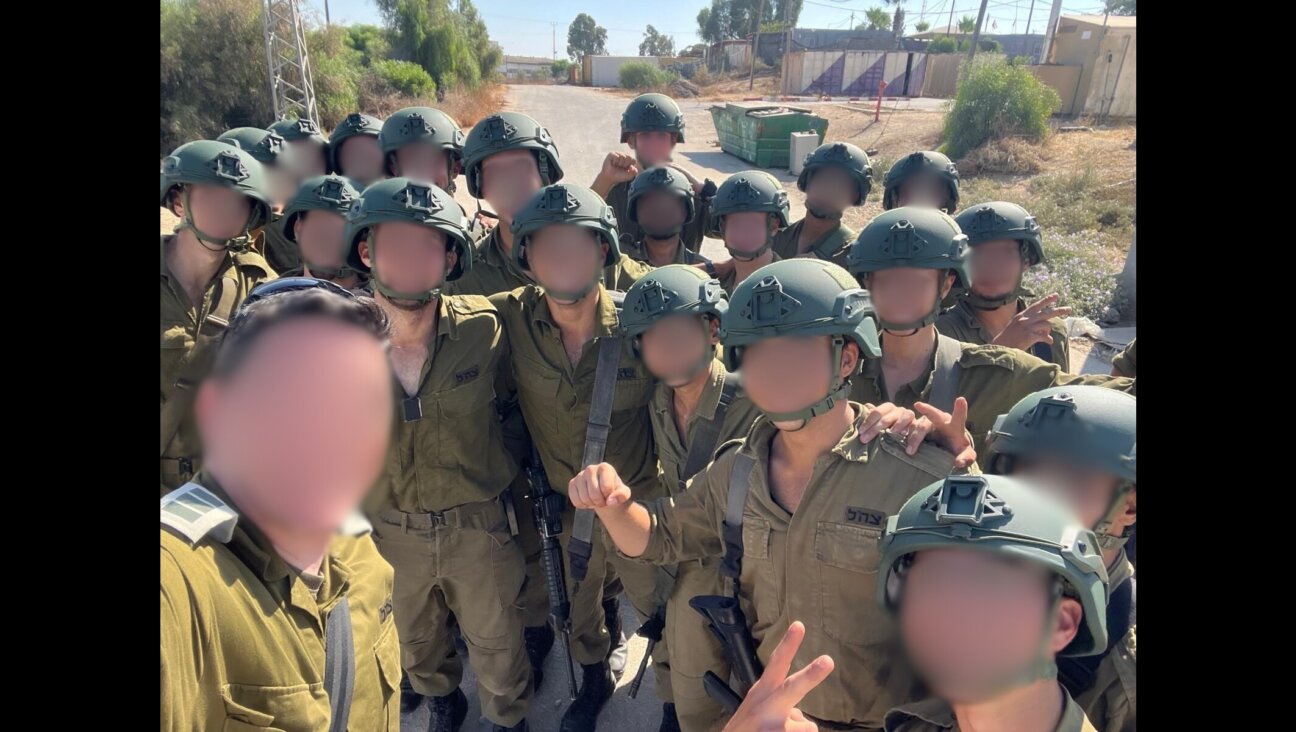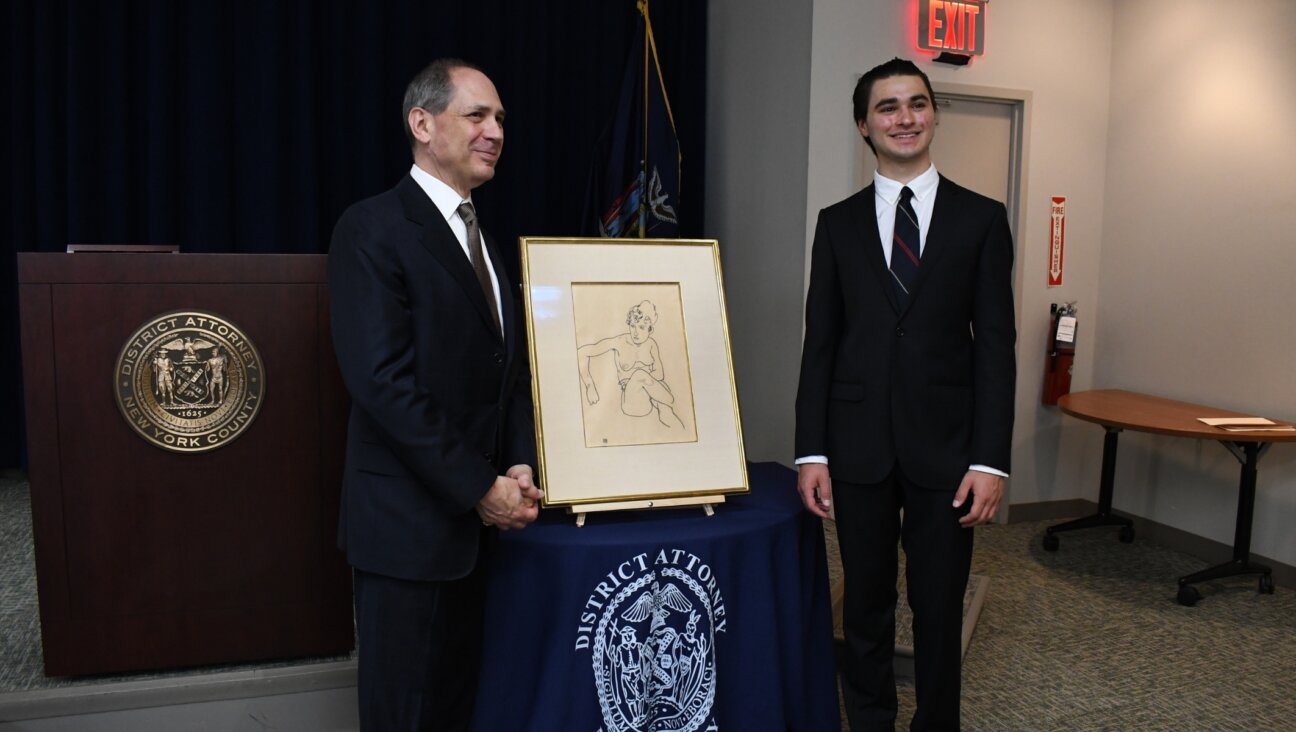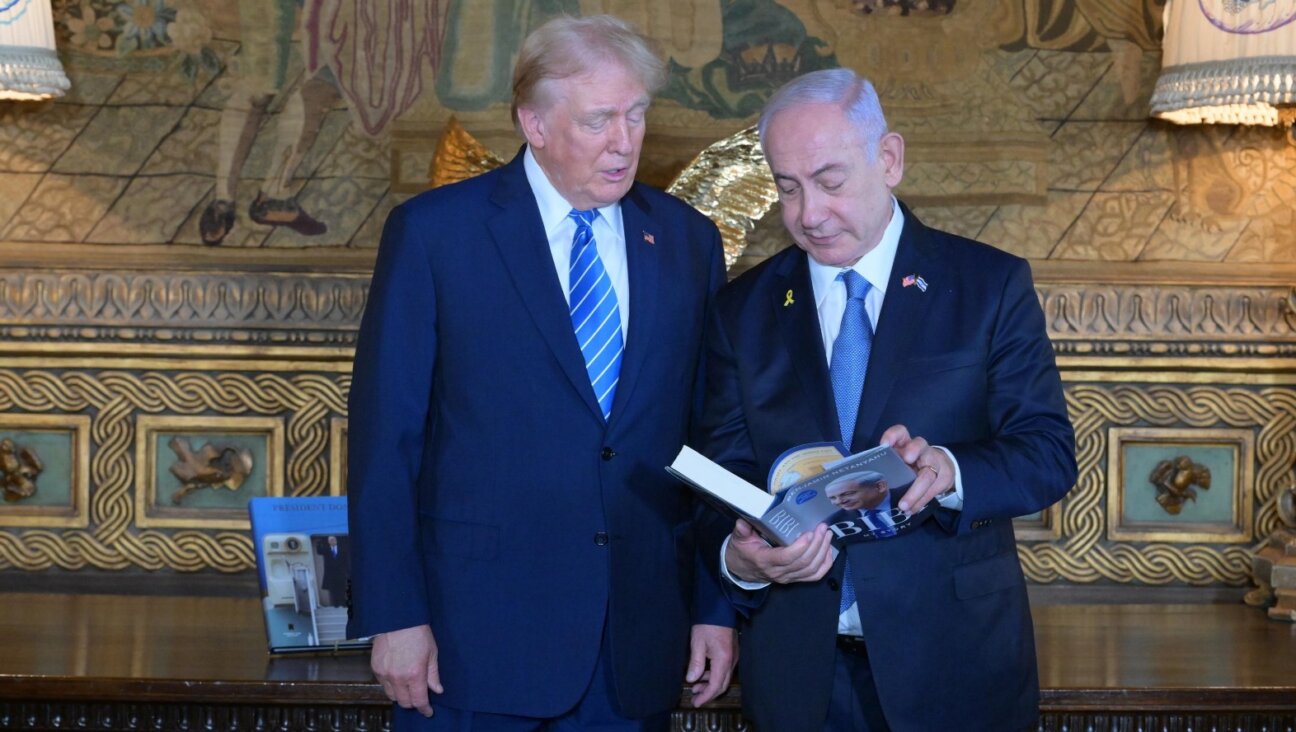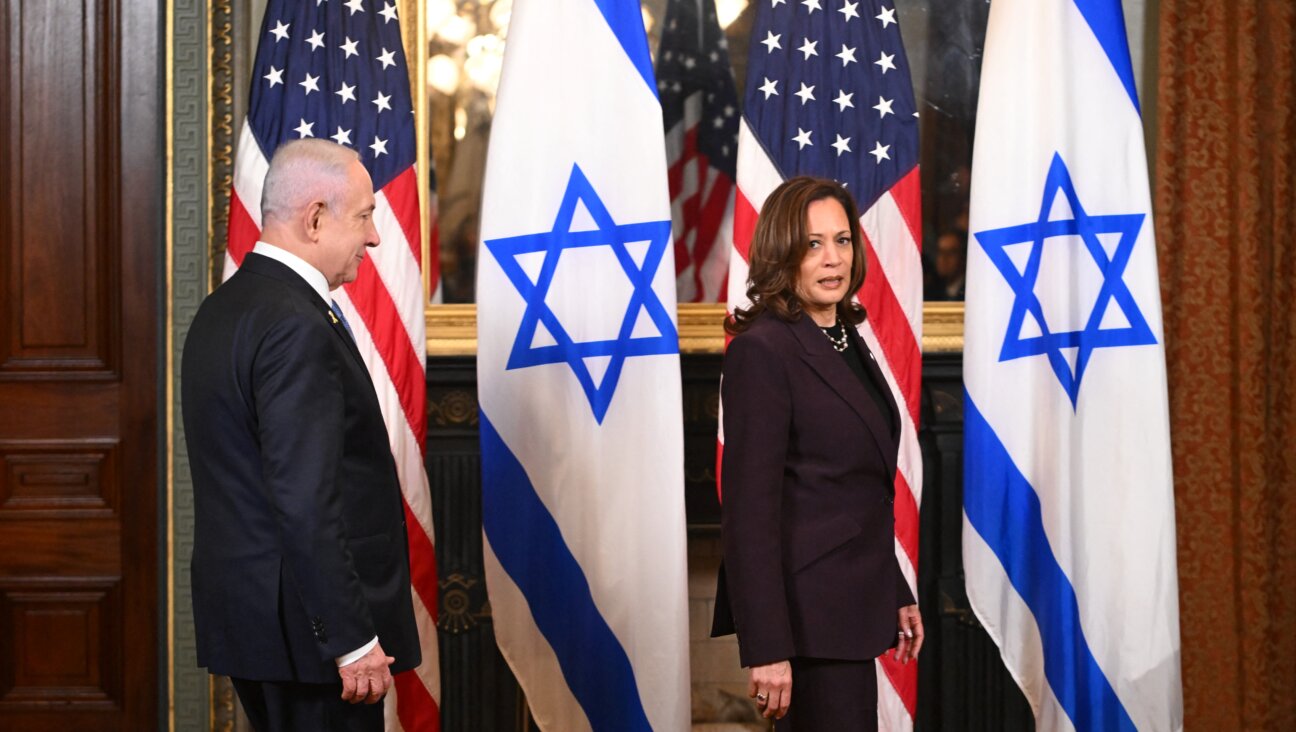Auschwitz and the coronavirus: a single garment of destiny

Image by Getty Images

United States Holocaust Memorial Museum Image by Wikimedia Commons
The legacy of the Shoah has been amplified by a global pandemic that will define this century just as the Holocaust defined the last. And the message of one reinforces the other: We are all inextricably connected, like the woven threads of a tapestry.
A verse from Jeremiah 18, popularized in the Yom Kippur liturgy, describes human beings as clay in the hands of a divine potter. The medieval poet expands on this to compare God with various other artisans and people to the objects created by him. One image that is particularly striking compares humanity to a tapestry, with God as the weaver: “As tapestry in the hand of the weaver, who drapes and twists it at will, so are we in Your hand, righteous God.”
I was thinking of this imagery when I heard a lovely Israeli song hauntingly sung at a Holocaust Remembrance Day ceremony at Yad Vashem. Its title is “Rikma Enoshit Echat,” “One Human Tapestry,” and the translated lyrics go like this:
When I’m gone,
Something inside you,
Something inside you,
Will die with me, will die with me.
When you’re gone,
Something inside me,
Something inside me,
Will die with you, will die with you.
For we all are, yes, we all are,
We all are one human tapestry,
and if one of us fades away, something within each of us dies
But something of him remains in us.
In Hebrew the word rikma, is translated best into English as “tapestry” or “embroidery”— but in fact also is a word for human tissue. When anyone dies, a part of each of us has died — not simply spiritually but physically; we are all part of the same human body. There is no real place where “I” ends and “you” begin.
There is no dividing line. The air we breathe is shared, not just with other humans but with all creatures, and we are engaged with vegetation in acts of mutual and reciprocal CPR as we barter oxygen for carbon dioxide. Every time I touch a doorknob, my body is welcoming in millions of your germs. Every time I sneeze, part of me is paying a visit to your immune system.
Think of the historical progression in describing how human lives interconnect. A century ago, people were talking about the mass of immigrants coming together in America as a melting pot. It’s a great image; but in a melting pot, all individuality is subsumed into the whole. So, to enhance that, in the 1980s Mario Cuomo and David Dinkins called New York a “magnificent mosaic,” accentuating cultural diversity; but what’s holding a mosaic together, except a little glue? The tiles are otherwise disconnected, like many neighborhoods in New York.
But a rikma — a human rikma — an embroidery of cross-stitched sinew, maintains the uniqueness of each strand, while at the same time validating that we are inextricably intertwined, body and soul.
Dr. Martin Luther King, Jr. writes in his letter from the Birmingham Jail, “We are caught in an inescapable network of mutuality, tied in a single garment of destiny. Whatever affects one directly, affects all indirectly.”
At the museum in Auschwitz, the overwhelming, unspeakable photos of the intertwined bodies of the victims (at peak efficiency, they gassed up to 3,000 at a time in Birkenau) give us a completely new way to understand that network of mutuality. In those photos, it is nearly impossible to detect where one body begins and another ends, and there is nothing to indicate which victim was from Germany, from Hungary or from Slovakia. There is very little to determine who was a Hasidic, Reform or secular Jew; Jewish or just Jew-ish, or not Jewish altogether.
After Auschwitz, a song like Rikma Enoshit Echat, “One Human Tissue,” leads ultimately to that searing image of interconnection. We go beyond the network of mutuality, the melting pot, or fabulous mosaic, or even the woven tapestry of that Yom Kippur liturgical poem, and we see rikma in its most literal sense. We are one human body.
And now, 75 years after the Holocaust, the line is drawn directly to our current predicament. Despite the forced separation of social distancing, never before has all of humanity felt — or been — so physically interdependent.
Our fates are literally in the hands, washed or unwashed, of millions of people whom we will never meet. College students who defy the calls to avoid bars and beaches during Spring Break are literally endangering the lives of their grandparents. Through each cough or sneeze, our bodies have become One Human Tissue.
When HIV first spread, it was suggested that when a person had unprotected sex, they were having sex with every prior partner as well. Now with this pandemic, that contention has been extended to breathing and touching.
Each hug is a potential dagger, not just for the person opposite you but to people on the other side of the world, no matter where you live or who you are. Front pages from all over the world are screaming the very same headlines. We’ve never been so lonely and fearful, sitting in our cold, quarantined rooms; but through our very separation, we’ve never been so inextricably interconnected.
And with that, we’ve reached a different place in the evolution of Judaism and human civilization.
The Torah of Sinai promoted the creation of boundaries for the purpose of distinguishing one person, and one nation, from the next, so that the “chosen” nation might take responsibility for bringing holiness to the world. But we have seen what can happen when such goals are distorted through the funhouse mirror of modern racist ideology. Well-intentioned boundaries metathesize into something they were never intended to be. We have seen what can happen when the world of distinctiveness is taken to its nationalist, secular extreme.
The ethos emerging from the Holocaust compels us to eradicate those boundaries. COVID-19 drives home that vision.
I believe we have entered a world of connection rather than separation and distinction.
We are moving, in a sense from kosher to kesher. These nearly identical Hebrew words signify the old ways and the new, the Torah of Sinai and the Torah of Auschwitz.
The laws of keeping kosher are, like the rest of the Sinai laws of holiness, built on distinction, on drawing lines of separation. Kesher, on the other hand, is the Hebrew word for connection, calling on us to dissolve distinctions.
The kosher laws remain a worthy concept (and I’m a huge proponent of them), as does holiness in general; but holiness cannot be an end in itself. Living a holy life is just a first step leading to what’s more important: the goal of tapping into that inescapable network of mutuality, rather than separating one being from another. This was true, to an extent, even in the Torah of Si- nai, whose central principle, after all, is that we love our neighbor as ourselves, not that we eat pastrami at Ben’s Kosher Deli.
We are not leaving Kosher behind, but now we need to look at it through the prism of Kesher; because in the end, we are all one human tissue, as we were at Auschwitz.
When you die, something dies inside of me. Separation is an illusion. What unites us is that, when the blinders are taken off, we are One. Not just all Jews, but all of humankind — forever linked, woven tightly into this human tapestry. We are now truly One.
Joshua Hammerman’s new book, “Embracing Auschwitz: Forging a Vibrant, Life-Affirming Judaism that Takes the Holocaust Seriously,” will be published next month by Ben Yehuda Press.
A message from our editor-in-chief Jodi Rudoren

We're building on 127 years of independent journalism to help you develop deeper connections to what it means to be Jewish today.
With so much at stake for the Jewish people right now — war, rising antisemitism, a high-stakes U.S. presidential election — American Jews depend on the Forward's perspective, integrity and courage.
— Jodi Rudoren, Editor-in-Chief










